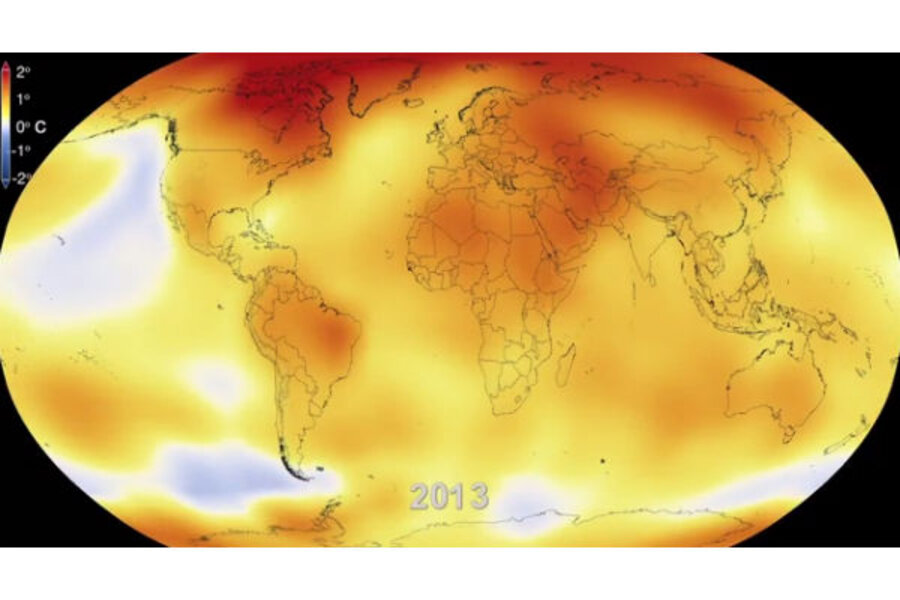Global warming trend continues, so why are we all shivering?
Loading...
While the latest arctic blast has many Americans cranking up their furnaces, the global warming trend marches on, according to new data released by government climatologists.
Both NASA and the National Oceanic and Atmospheric Administration (NOAA) both independently ranked 2013 as one of the 10 hottest years since 1880. Nine of the top 10 hottest years occurred since the turn of the 21st century.
That may come as a surprise to those experiencing wind chills in the negative double digits for the first time, but there’s a big difference between weather events and climate trends, climatologists say.
“Winter happens,” even in a warming world, says Gavin Schmidt, deputy chief of NASA’s Goddard Institute for Space Studies.
While Americans muddled through the first arctic blast of 2014, Europe experienced exceptionally warm temperatures. NOAA found that some areas of the Untied States actually experienced cooler than normal temperatures, but for the nation as a whole, 2013 was warmer than average.
“When you integrate temperatures over the whole planet you are smoothing over those variations,” Mr. Schmidt says. “When you are looking to see what’s happening to the climate, it’s those averages that matter.”
NOAA and NASA estimate that the global average temperature for 2013 was about 58 degrees F., give or take a couple tenths of a degree. NOAA ranked 2013 as the fourth hottest on record, tied with 2003, while NASA listed the year in seventh place, in a three-way tie with 2006 and '09. Schmidt attributes the discrepancy to slight variations in how the two agencies calculate temperatures in remote parts of the globe and maintains that the difference is not statistically significant.
“What is significant is the fact than this is very clearly another top 10 year, as all of the last several years have been,” he says.
The news came as no surprise to climatologists as this was the 37th year in a row that researchers recorded higher-than-average global temperatures.
“This is pretty much as predicted, but people spend a lot of time thinking about what happened this week or last week or today and they’re not really thinking about the long-term trend,” Schmidt says.
While the temperatures in New England this month may have felt shocking to residents, cold outbreaks were once much more common in the Northeast.
“People forget just how cold it used to be,” he says. “The only way to keep track of that is to get outside of the realm of anecdotes and back into the realm of data.”
While El Niño was a factor in previous years, 2013 made its way onto the top 10 list without any push from El Niño. Should El Niño return in 2014, we could see even warmer temperatures next year.
Warming trends have been associated with an uptick in extreme weather events. Last year, weather disasters took a $41 billion toll on the global economy, the second highest since 2010, the Associated Press reports.
As temperatures rise, we could see a continued loss of sea ice in the Arctic.
“Arctic sea ice is down considerably, especially over the past 10 to 11 years,” Tom Karl, director of NOAA’s Climatic Data Center told Agence France-Presse.








